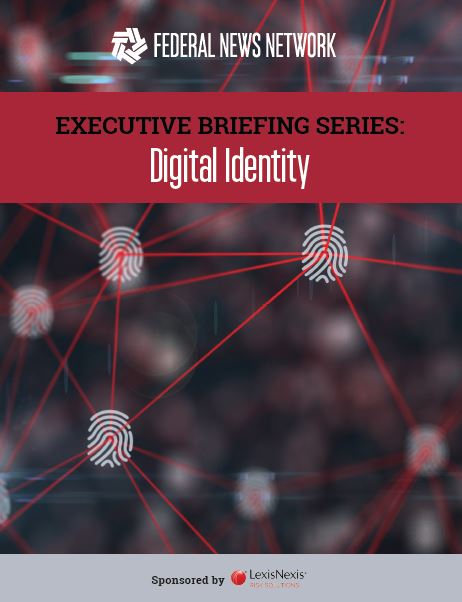Hubbard Radio Washington DC, LLC. All rights reserved. This website is not intended for users located within the European Economic Area.
On Air: Federal News Network
Executive Briefing Series: Digital Identity
On Demand
Executive Briefings
In this exclusive executive briefing, experts discuss what's ahead in digital identity and verification.
 The growth in digital services, the morphing nature of cybersecurity threats, and new expectations of customer experience are driving federal agencies to revise their approaches to digital identity management. More people are doing a growing number of transactions with agencies digitally. Yet because of widespread fraud and identity theft, it’s becoming more difficult to reliably verify that online visitors are who they claim to be.
The growth in digital services, the morphing nature of cybersecurity threats, and new expectations of customer experience are driving federal agencies to revise their approaches to digital identity management. More people are doing a growing number of transactions with agencies digitally. Yet because of widespread fraud and identity theft, it’s becoming more difficult to reliably verify that online visitors are who they claim to be.
In this exclusive executive briefing, the following experts discuss what’s ahead in digital identity and verification:
- Jonathan Feibus, Deputy Director, Governance and Enterprise Management Services Division, Nuclear Regulatory Commission
- Ryan Koder, Lead Product Representative, Homeland Advanced Recognition Technology (HART), Office of Biometric Identity Management (OBIM), Department of Homeland Security
- Phil Lam, Executive Director of Identity, Technology Transformation Services, General Services Administration
- Andrew McClenahan, Solutions Architect, LexisNexis Risk Solutions
- Chezian Sivagnanam, Chief Enterprise Architect, National Science Foundation
- Kimberly Sutherland, Vice President of Fraud and Identity Strategy, LexisNexis Risk Solutions
By providing your contact information to us, you agree: (i) to receive promotional and/or news alerts via email from Federal News Network and our third party partners, (ii) that we may share your information with our third party partners who provide products and services that may be of interest to you and (iii) that you are not located within the European Economic Area.
Please register using the form on this page.
Have questions or need help? Visit our Q&A page for answers to common questions or to reach a member of our team.
By providing your contact information to us, you agree: (i) to receive promotional and/or news alerts via email from Federal News Network and our third party partners, (ii) that we may share your information with our third party partners who provide products and services that may be of interest to you and (iii) that you are not located within the European Economic Area.

